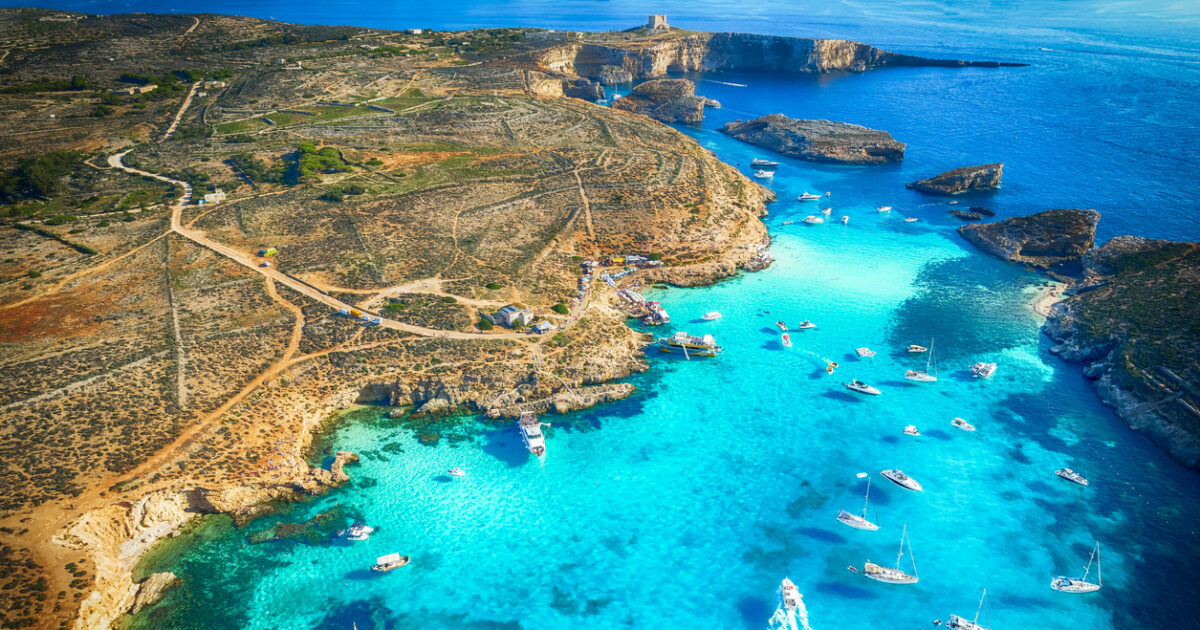Komino is a small island of Maltewhich exudes a sense of serenity and is renowned for the unparalleled beauty of its crystalline waters and its white sand.
The island is located between the two largest islands of the Archipelago, Malta and Gozo, and is a popular tourist destination.
At the same time, it is a bird refuge and a protected Natura 2000 area. It also has an area of only 3.5 sq. Km. and is completely wet by the Mediterranean Sea.
Komino’s most famous attraction is Blue Lagoon, an enchanting bay of turquoise waters that attracts thousands of visitors every year from all over the world who want to enjoy quiet holidays, diving or water sports.
In addition to the lagoon, the island has impressive caves and isolated beaches, away from the crowds.
For long periods in its history, the island was sparse or abandoned entirely. Today, in Komino, only two residents reside. It is administratively owned by the Municipality of Gadznsielem, of the southeastern Gozo, from where a police officer and a priest go to the island during the summer months when a need to offer their services to tourists.
Komino has been inhabited since the Roman era and its Greek name, at that time, was “volcano” (or volcanoes), suggesting that there was some kind of relationship with the ancient Greeks.
Despite its small size, it is of historical importance, as it hosts the Tower of St. Maria (in Maltese Torri Ta ‘Santa Marija) or Komino Tower (built in 1618), an old fortress used as an observatory during the Middle Ages to prevent the raids between the Middle Ages.
At the end of the 13th century, Komino was the place of residence of the exiled Spanish philosopher Abraham Aboulafia (1240-1291), who claimed to be a prophet. In Komino, Aboulafia composed his work “The Book of Omon” (Sefer of Ha-Ot) and “Words of Beauty” (Imre Shefer).
The knights of the Order of St. John of Malta used the island as part of hunting and leisure. The Knights were shown strong interest in local hunting, which consisted of wild boars and hares. If someone was poaching in Komino, he was sentenced to three years as a slave to cook.
In the 16th and 17th centuries, Komino was used as a place of imprisonment or exile for wandering knights. The knights convicted of secondary criminal acts were sometimes punished by their placement on the island’s tower.
During the French occupation of Malta, Komino served as a quarantine site and existing buildings served as a hospital.
The island was also used as a reservation of people pending their trial.
During the period 1982 – 2002, the tower was used by the Maltese Armed Forces to prevent illegal hunting of migratory birds.
The island has also become a backdrop for Hollywood films.
The tower of St. Maria was the prison scene for the film “Count Monte Kristo” (2002), starring Jim Cavizel, starring Edmond Dantes, while the serene waters of the lagoon appeared in the film “Troy” (2004).
